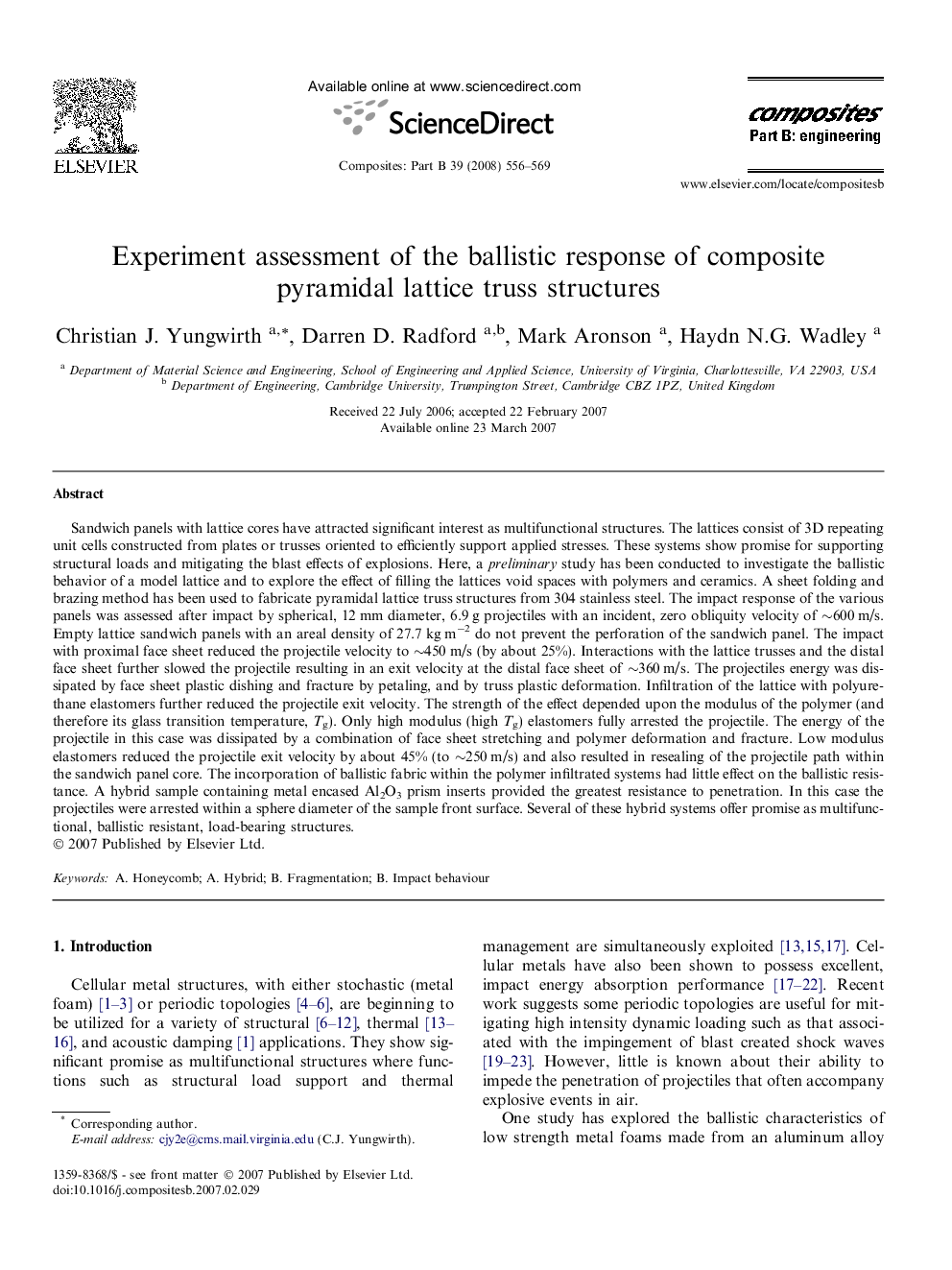| Article ID | Journal | Published Year | Pages | File Type |
|---|---|---|---|---|
| 819599 | Composites Part B: Engineering | 2008 | 14 Pages |
Abstract
Sandwich panels with lattice cores have attracted significant interest as multifunctional structures. The lattices consist of 3D repeating unit cells constructed from plates or trusses oriented to efficiently support applied stresses. These systems show promise for supporting structural loads and mitigating the blast effects of explosions. Here, a preliminary study has been conducted to investigate the ballistic behavior of a model lattice and to explore the effect of filling the lattices void spaces with polymers and ceramics. A sheet folding and brazing method has been used to fabricate pyramidal lattice truss structures from 304 stainless steel. The impact response of the various panels was assessed after impact by spherical, 12 mm diameter, 6.9 g projectiles with an incident, zero obliquity velocity of â¼600 m/s. Empty lattice sandwich panels with an areal density of 27.7 kg mâ2 do not prevent the perforation of the sandwich panel. The impact with proximal face sheet reduced the projectile velocity to â¼450 m/s (by about 25%). Interactions with the lattice trusses and the distal face sheet further slowed the projectile resulting in an exit velocity at the distal face sheet of â¼360 m/s. The projectiles energy was dissipated by face sheet plastic dishing and fracture by petaling, and by truss plastic deformation. Infiltration of the lattice with polyurethane elastomers further reduced the projectile exit velocity. The strength of the effect depended upon the modulus of the polymer (and therefore its glass transition temperature, Tg). Only high modulus (high Tg) elastomers fully arrested the projectile. The energy of the projectile in this case was dissipated by a combination of face sheet stretching and polymer deformation and fracture. Low modulus elastomers reduced the projectile exit velocity by about 45% (to â¼250 m/s) and also resulted in resealing of the projectile path within the sandwich panel core. The incorporation of ballistic fabric within the polymer infiltrated systems had little effect on the ballistic resistance. A hybrid sample containing metal encased Al2O3 prism inserts provided the greatest resistance to penetration. In this case the projectiles were arrested within a sphere diameter of the sample front surface. Several of these hybrid systems offer promise as multifunctional, ballistic resistant, load-bearing structures.
Related Topics
Physical Sciences and Engineering
Engineering
Engineering (General)
Authors
Christian J. Yungwirth, Darren D. Radford, Mark Aronson, Haydn N.G. Wadley,
